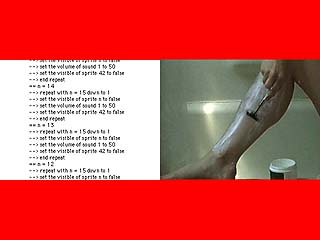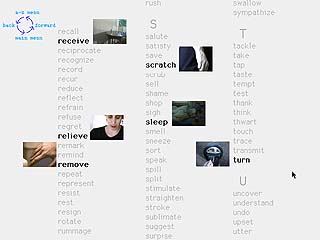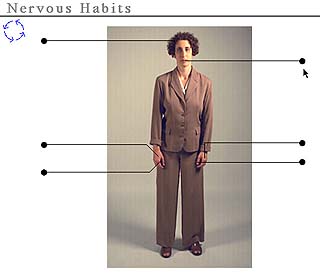
Natalie Bookchin is an artist who works in new and old media. She exhibits her work, lectures and performs frequently in the States, in Europe and in cyberspace. In 1998 and 1999 she exhibited her work in France, Switzerland, England, the United States, Spain, the Netherlands, Germany, Macedonia, and Canada. She was included in the first exhibition of electronic art organized by New York City's Creative Time Inc. for their annual show at the Brooklyn Bridge Anchorage.
Her recent works have been reviewed in dozens of national and international journals including The New York Times on-line and off line,Artforum, the Berlin Tax, die tageszeitung , ABC National Radio in Australia and French Canadian television,She studied in the Whitney Independent Studies Program in New York and the School of the Art Institute of Chicago.
Conceptual Description
Databank of the Everyday addresses the death of photography in the electronic
age, where photography finds itself as just more data in a database. The
project borrows its form from both a computer database and a stock photography
catalogue. Following current rhetoric surrounding the computer, with its
promise of an endless flow of information, Databank presents the ultimate
databank, one with no conceivable limits: a databank of Life Itself. Moreover,
just as twentieth century media forms - film and photography - provided unique
models for representing human motion and the body, (frozen or captured in
photography and caught in the linear movement of film), Databank proposes
that the computer has its own particular model for representing the body-
a loop. Life is represented as a series of loops performed by the body much
like the simple loops performed by a computer program. The body, stuck in
its loops, is like an flawed machine, rendered inefficient by desires, habits
and compulsions.
Featuring the latest in amplified fin-de-siècle rhetoric, the Databank vehemently perpetuates the current hysteria surrounding new technologies. Again we witness a revolution, and again we hear loud claims about the universality of the change and the transformation of everyday life. (History, as we know, also repeats itself like a loop.) Thus, in keeping with the tradition, and in compliance with early twentieth century avant-garde movements, the Databank heralds its very own Twenty-First Century Manifesto.

